About Udaipur
Udaipur
Discover The Lake City Udaipur
Udaipur – the “City of the Lakes” or the “Venice of the East” – is a “smaller” Indian city with a population around 500.000, founded in 1559 by Maharana Udai Singh II.
Udaipur, the stunning City of Lakes in Rajasthan, is renowned for its majestic palaces, scenic landscapes and vibrant culture. Home to some of India’s most spectacular forts, Udaipur has become a popular tourist destination for travellers from all corners of the globe. The city is also known for its lip-smacking delicacies that are unique to the region. The city’s culinary scene includes delicious Rajasthani cuisine such as Dal-Baati-Churma, Kadhi-Bafla and Gatte ki Sabzi. Here at Nayan Dining Hall & Restaurant, we also serve cuisine from other parts of India, like Gujarat, making it a must-visit spot for locals and visitors coming to Udaipur.
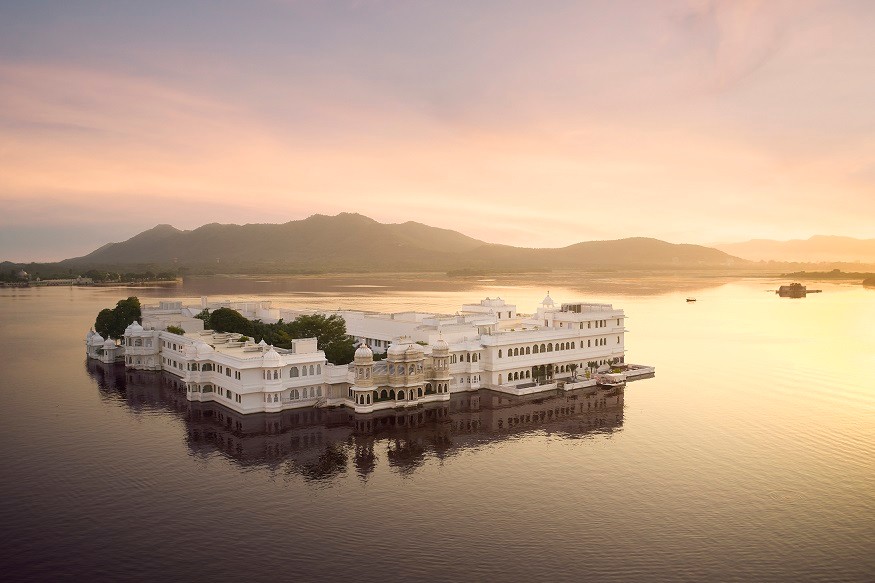
Places to Visit

City Palace
City Palace complex is actually a conglomeration of buildings added by various maharanas, the palace manages to retain a surprising uniformity of design. Building was started by maharana Udai Singh II. The palace is surmounted by balconies, towers & cupolas and there are wonderful views over the lake and the city from the upper terrace. Main entrance is from northern end through the Baripol of 1600 and the Tripolia Gate of 1725 , with its eight carved marble arches. It was once custom for maharanas to be weighed under the gate and their weight in gold or silver distributed to the populace.
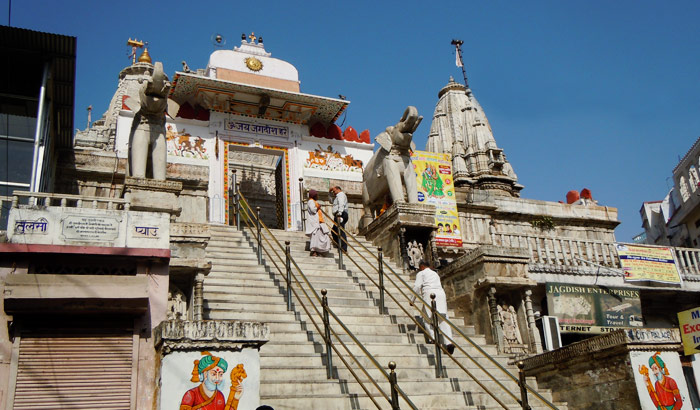
Jagdish Temple
‘Jagdish Temple’ – is an magnificent Indo – Aryan Temple in Udaipur City. Located only 150 m north of the entrance to the City Palace, this fine Indo-Aryan Temple was built by Maharana Jagat Singh in 1651 and enshrines a black stone image of Vishnu as Jagannath, Lord of the Universe. There is a brass image of the Garuda in a shrine in front of the temple and steps up to the temple are flanked by elephants.
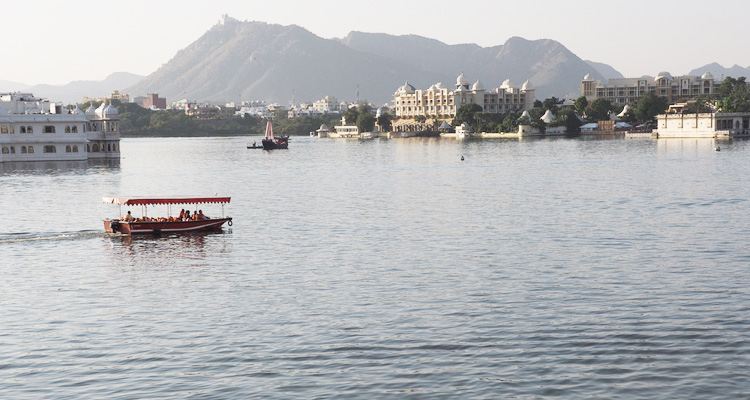
Lake Pichola
Beautiful Lake Pichola was enlarged by Maharaja Udai Singh II after he founded the city. He built a masonry dam, known as the Badipol, and the lake is now 4km long and 3 km wide. Nevertheless, it remains fairly shallow and can actually dry up – in severe droughts it’s possible to walk to Jagniwas and Jagmandir island. A handful of crocodiles are believed to inhabit the more remote parts of the lake, near the inhabited sections of the shore. The City Palace extends for a long stretch along the east bank.
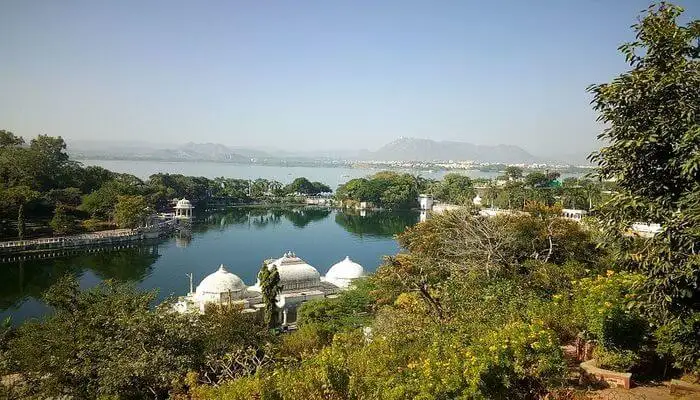
Dudh Talai / Ropeway
Dudh Talai is a beautiful laid out rock garden in Udaipur. It was once used as a bathing ground. Sunset view in Pichhola Lake and panoramic view of the old Udaipur city and its palaces can be enjoyed from here. Another attraction of this garden is the musical fountain. The local handicraft market is very close to this garden. Dudh Talai, situated adjacent to the City Palace, is 24 km from Udaipur Airport.
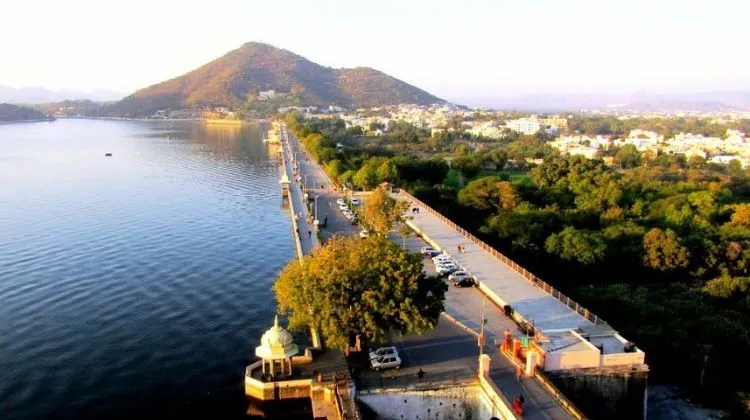
Fateh Sagar
Surrounded by a number of hills, Fateh Sagar was originally built in 1678 by Maharana Jai singh, but it was reconstructed by Maharana Fateh Singh after heavy rains destroyed the dam. It is an artificial lake. A canal links the two, via Swaroop Sagar and Rang Sagar Lakes. A pleasant drive winds along the east bank and in the middle of the lake is Nehru Park, a popular garden island with a boat shaped cafe. In dry years, you can walk there otherwise you can catch a boat, from the bottom of Moti Magri, to reach there.

Moti Magri
Atop the Moti Magri, or Pearl Hill, overlooking Fateh Sagar, is a statue of the Rajput hero Maharana Pratap, who frequently defied the Mughals. The path to the top traverses elegant gardens, including a Japanese rock garden.

Saheliyon Ki Bari
Saheliyon ki badi, or Garden of the Maids of Honour, is in the north of the city, is well maintained, with fountains and kiosks, a delightful lotus pool and marble elephants. There is also a small museum here; of which the main attraction are some stuffed cobras.
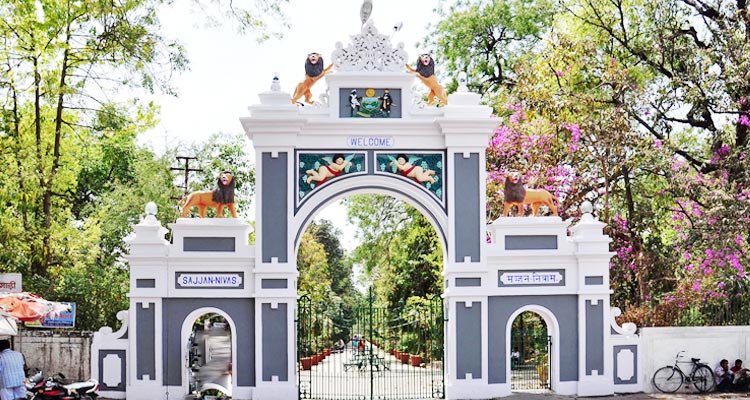
Gulab Bagh
‘Gulab Bagh’ affords some fantastic panoramic beauty and also houses a library with a rich collection of old handwritten scripts and books. A spectacular rose Garden laid out by Maharana Sajjan Singh, is situated near the palace on east side of Lake Pichhola. A library in the garden has a rare collection of ancient handwritten manuscripts and books. Within the garden, there is a zoo where tigers, leopards, chinkara and many wild animals and birds are being kept.

Bhartiya Lok Kala Mandal
Bhartiya Lok Kala Museum is one of the most famous museums of Udaipur, exhibiting the brilliant collection of folk articles of Rajasthan from typical rural-dresses, ornaments, puppets, masks, dolls, folk musical instruments, folk deities and paintings. The museum is comfortably located in the building of Bhartiya Lok Kala Mandal near Chetak Circle in Udaipur city.
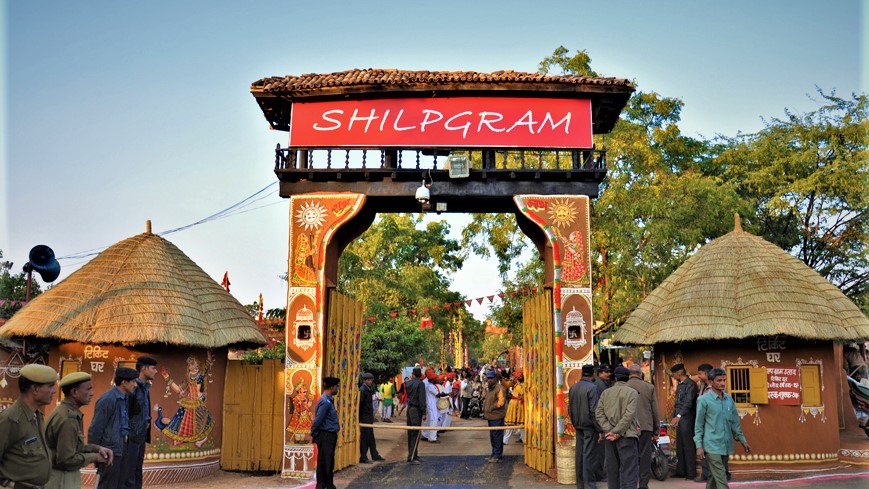
Shilpgram
Shilpgram, a craft village 3km west of Fateh Sagar, has displays of traditional houses from Rajasthan, Gujarat, Goa and Maharashtra. There are also demonstrations by musicians, dancers, or artisans from these states. Although its much more animated during festival times [usually in early December].
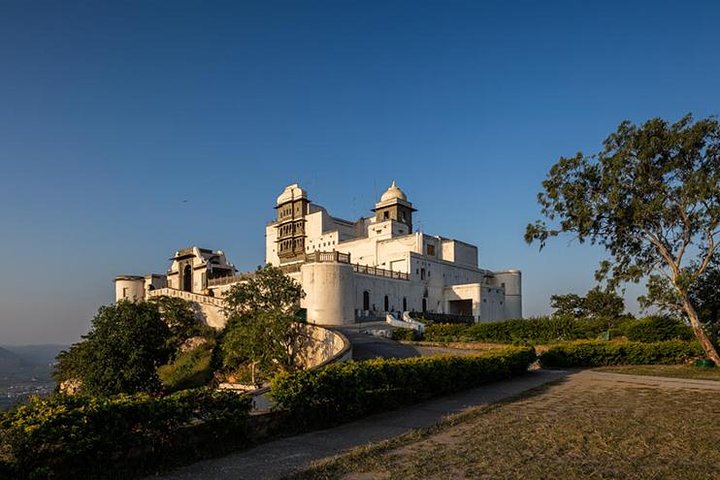
Sajjan Garh (Monsoon Palace)
Sajjan Garh offers a panoramic overview of the city’s lakes, palaces and the surrounding countryside. Sajjan Garh, a formar monsoon palace 1100 ft. high above the surrounding and 3100 ft. from sea level, was built by Maharana Sajjan Singh in 1884. The palace looks its best during the rainy season. It offers a panoramic overview of the city’s lakes, palaces and surrounding country side. The hillside is thickly wooded and the former rulers maintained this as a royal shooting preserve. The palace provides a beautiful view of the sunset